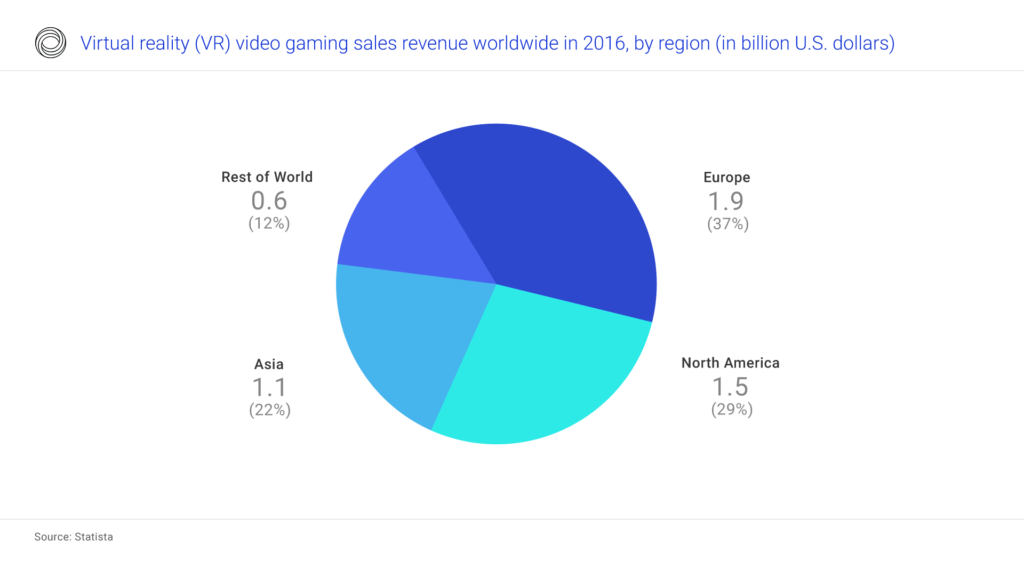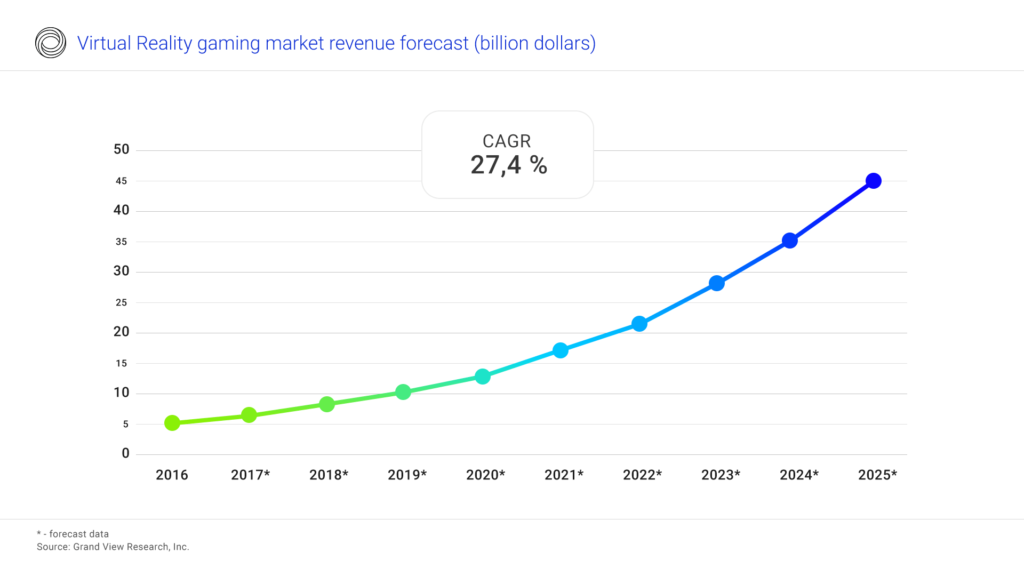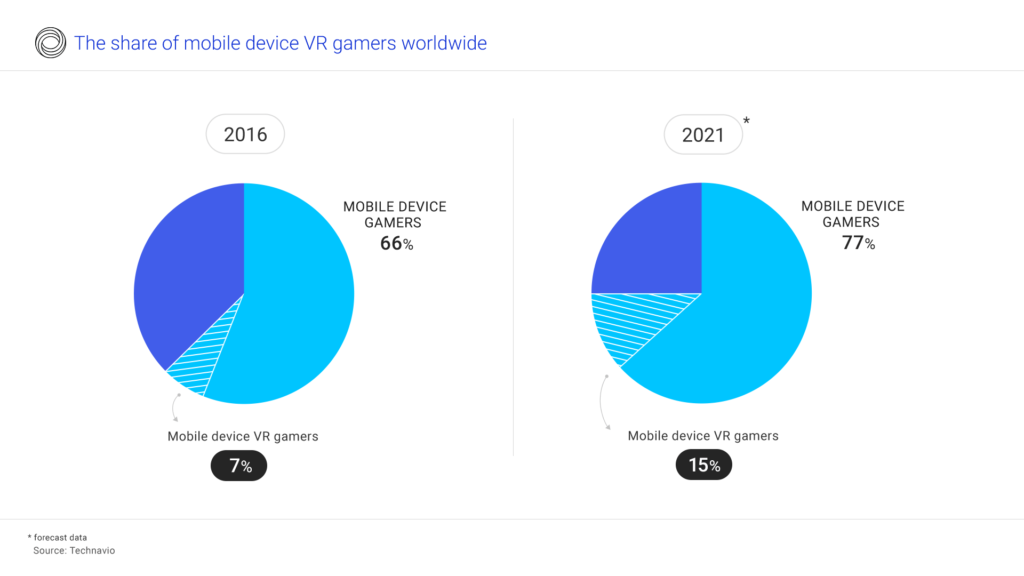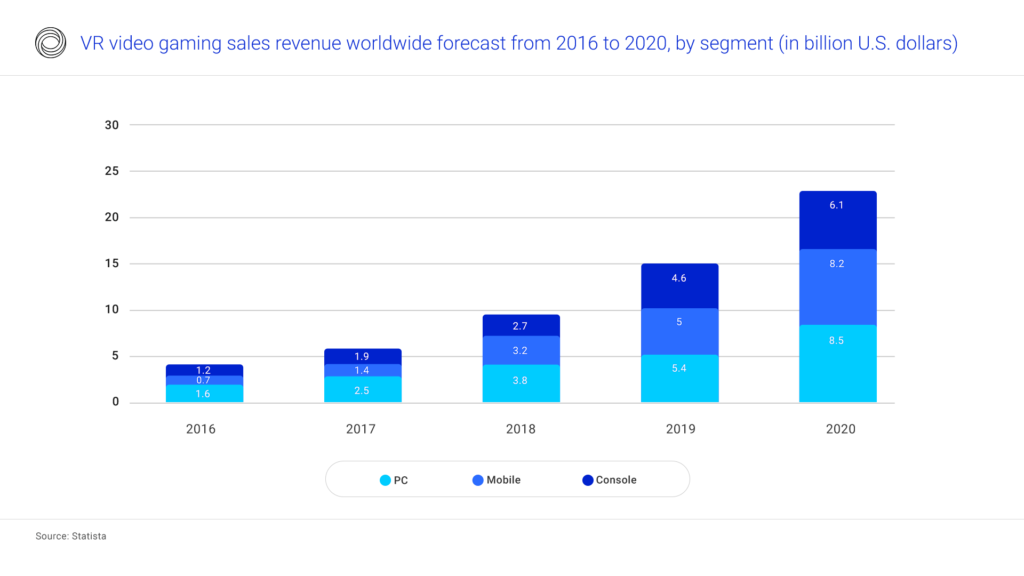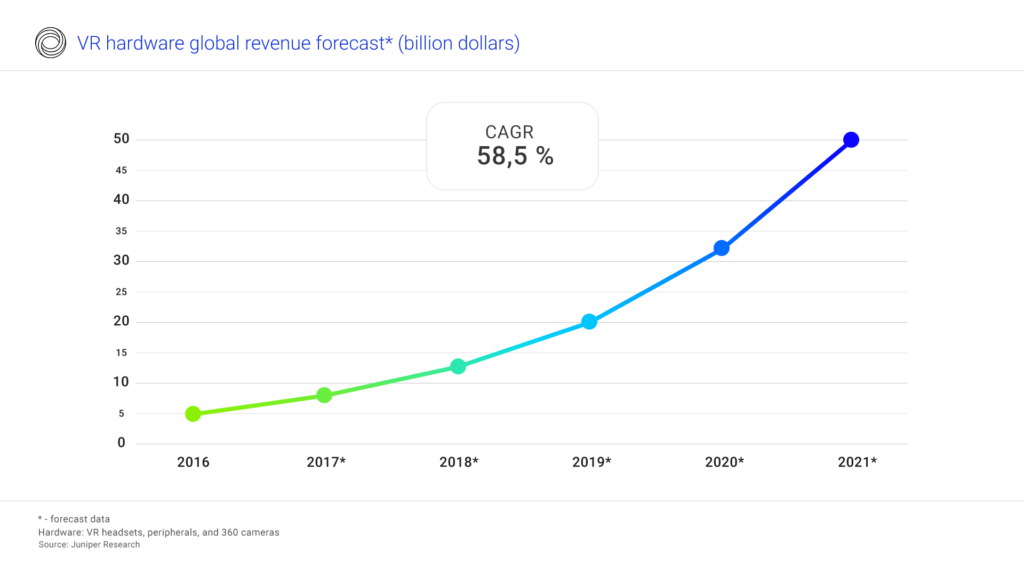Virtual reality gives the player new opportunities to experience the game. In particular, VR gaming opens up a three-dimensional space and opportunity to interact with the virtual environment, e. g. to manipulate virtual objects.
To call it a game it’s not even the most appropriate notion. Being in virtual reality is more serious activity, which experts increasingly call virtual reality experiences. Perhaps that the players will be even called experiencers in days to come.
One of the main factors for the success of virtual reality games is immersion. That is the ability of the environment to reproduce a realistic representation of all human senses. Let’s consider each of them.
5 senses in VR gaming
So far, the main device for immersion in virtual reality video games is head-mounted display (HMD). It involves the main sense, through which we obtain most of the information. It’s visual sense modality.
Visual

It seems that with this component everything is more or less clear. Nevertheless, for deep immersion, the graphics processing of virtual experience requires a working power that is from 7 to 8 times higher than traditional graphics needs.
Graphics processing in VR gaming implies the development of a high-class algorithm which lets the app to see the surroundings as the experiencer does, discern, copy it and transmit it within the framework of the game. For the production of high-quality content, it is necessary to create seamless high-resolution images with low or zero latency. All this will be able to allow avoiding motion sickness, as the main reason of nausea is substandard visual output.
Thus, the creation of bezazz VR graphic requires a fruitful collaboration of graphics programmers, code programmers, and art designers. Everything is not so simple. Isn’t it?
Sound

People perceive sound in three dimensions. Accordingly, we are able to determine the direction from which the sound emanates, even if the source of sound is not in our field of view. Thereby, there is a challenge in VR gaming to coordinate the picture and 3D sound.
The creation of 3D sound is a separate task.There are some techniques how to do it. In VR gaming system where visual imagery is pre-configured, the best way is to use object-based audio. Such a decision implies attaching audio information to any number of visual objects. The creators can precisely specify where these sound objects should be and how they should move.
Object-based audio is more flexible technique than, for example, channel-based one, where the speakers and subwoofer are installed in particular places. In this case, the equipment should be placed very accurately to reproduce sounds in accordance with the visual series. This method is good for the movie since the filmmaker sees a linear plot, which is shown to him by the filmmaker. VR gaming make the experiencer to explore the virtual environment. Accordingly, there is a set of variants of user behavior. For example, when you are in VR, you can go to the left where the river murmurs, or to the right, where there is a huge tree, in the leaves of which the wind is sighing and the birds are warbling.

Object-based audio technology allows adding its own sound to each object, living or animated. In such a manner, the specific sound comes from the place where this object is located. If the latter moves, the sound also changes depending on how it moves (approaches or moves away) relative to the player.
Well, it is not such a new technology. It was implemented in Dolby Atmos started to use it back in 2014. Howbeit, at the moment it is the most progressive technology introduced into the content production for VR gaming.
Now earphones are not implemented in top HMDs, like Oculus, HTC Vive or PSVR. So, there is a need to use additional garniture to hear the sound. Although, there are not so well-known head-mounted displays with earphones, e. g. AUKEY VR Headset or Vuzix iWear video headphones or HelloPro. It may be well that the development of HMDs will be along here. In other words, three-dimensional sound and picture will be built into future HMDs for a deeper dive into the virtual world.
Yet this is only one side of the sound coin. One of the new stages of VR virtual reality gaming is a possibility to communicate during the gameplay. Obviously, socializing makes much more fun in multiplayer VR games. So, speech recognition is a function that massively improves gaming virtual experience.
In complex games that require appropriate behavior speech recognition likewise eye contact or bodily movements becomes a substantial of virtual reality games.
Tactile feedback
Most of the existing systems for immersion in a virtual environment set into motion 2 senses, in particular, sight and hearing. Devices with haptic feedback are not so common. At least, so far they have not received a mass distribution.
That’s exactly why in this area of hardware development there is a greatest potential to achieve. After all, haptic feedback allows feeling the virtual environment, not only seeing and hearing as it was before the creation of devices with tactile feedback.
“Current VR systems provide ‘buzz-like’ haptic sensations through hand controllers. But technology exists for much richer sensations”.
Ali Israr, senior research engineer at Disney Research

At first sight, sense of touch plays a relatively small role in gaming. Howbeit, this feeling transmits an immense amount of information. There is even a separate field of science that is called haptics. It studies the sense of touch and the skin as an organ of perception and creativity, and also tactile forms of activity and self-expression.
Tactile information is perceived by a person through nerve endings, located on the skin, in the muscles and joints, on the surface of the mucous membranes. Receptors perceive temperature, touch, vibration, change in body position, texture and so on. It is the receptors that transmit information about the position in the space of the whole body or a specific part of it. They participate in the formation of the so-called muscle feeling, which plays an important role in the process of movement. In addition, tactile organs save us in the dark, when our eyes can not tell what lies ahead.
Vibrotactile feedback has been integrated into the controllers for gaming long ago. That’s why many people prefer controllers to touch panels for control. It’s much nicer to play, feeling the buttons and the joystick. In general, this makes the player’s behavior is slightly more mobile. But what about virtual reality?
Virtual environment with all the variety of objects offers the challenge concerning a brand new type of interaction. Haptic gloves replace controllers in VRvirtual reality gaming. Besides, this is a more natural kind of object manipulation, where there is ostensibly no link between the virtual world and the body.

Image credit: Haptic gloves Teslagloves
As for VR suits, they do propel interaction in virtual gaming to new heights. Besides hands, they throw almost the whole body at the tactile interaction.
Smell
The olfaction is a very subtle thing to imitate, as a perception of smell is individual for the people. Furthermore, such technological systems are complicated enough. They include ozone generators, heaters, evaporators, vibromotors and fans.
Maybe, the most famous device is VR Mask by FeelReal, which allows imitating smells, as well as the effects of fog, heat, fire, wind, splashing and shaking.
Taste
Theoretically, it is possible to taste even virtual food. Sensors due to electricity can give the feeling of food structure, in particular, its hardness or softness.
Particularly, researchers from the National University of Singapore are experimenting with a device that allows simulating the presence of food in your mouth in an environment where it is actually not there. The device also allows a person to imitate the very effect of chewing. The method is based on electrostimulation of the jaw part.
Freedom of movement in VR gaming
In virtual reality gaming, there is a need to imitate walking or running. How can it be possible?
One of the ways is teleportation. This method is implemented in HTC Vive, when the player can teleport to different places in a virtual environment with the help of the controller.
The other method is physical walking around the room. Though it depends on the genre and on the size of the virtual world, in gaming, as a rule, it’s necessary to travel long distances.
Nevertheless, it’s impossible to use a small room for a movement to the utmost in the largest open worlds. Since the experiencer needs to walk in all directions, it is not convenient at all.
So, one more solution is virtual reality gaming treadmill (VR stationary omnidirectional treadmill). Such an equipment lets the player move directly in it, propping up and not allowing a person to get tired. But such devices have their limitations too. They are great for any virtual reality games that call for a lot of movement but are useless for the games which include crawling around on the floor.
Besides, Virtusphere, Inc. develops so-called Virtusphere which is 10-foot hollow sphere placed on a special platform that allows the sphere to rotate freely in any direction according to the user’s movements. The idea is good, but the development has so far dragged on.
Thereby, freedom of movement challenge in VR gaming has been met only partially. But even when freedom of movement is easily materialized in virtual reality, it will be another tough call. Namely, it is six degrees of freedom. 6DOF implies the possibility to perform motions in three-dimensional space, in particular, to move forward and backward, up and down, left and right, and also rotation like yaw, roll and pitch.
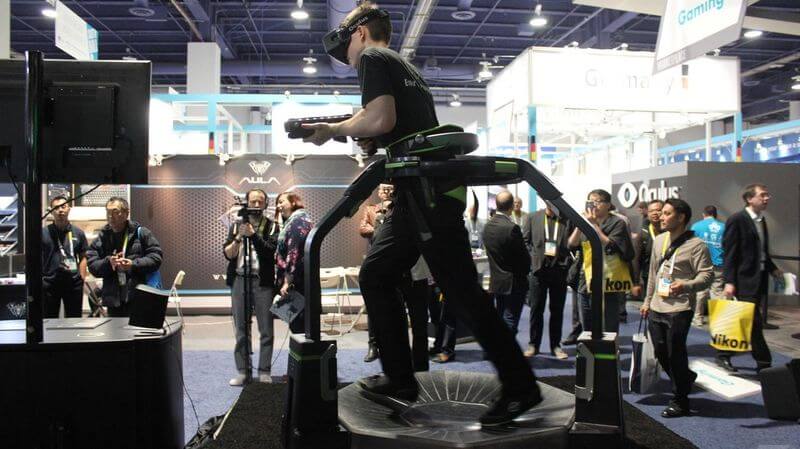
Image credit: Virtuix Omni VR Treadmill
Six degrees of freedom in gaming means the principle of developing computer games with no gravity and/or flights, where the player can freely move and rotate in three-dimensional space. Classic examples of computer games, which implements the principle 6DoF, is “Descent” and its sequels, “Homeworld” and “Zone Of The Enders”, the first-person shooter Shattered Horizon. Along with them, there are many simulations of the aircraft, rockets, and other aeronautical control. In 3D shooters, there are usually four degrees of freedom. In this case, the player can move in any direction on the ground and in the air, also change the yaw, but not roll or pitch.
Although the concept of flights in virtual reality brings us closer to 6DoF in gaming, the very present implementation is more associated with limitation than with freedom. Just imagine that you are hung up to the ceiling or installation and you are hovering… Or you are lying on VR flight simulator platform which is somewhat like a bending and moving table… You are securely fastened how it is done in Airflow VR. You will not be able to detach from this equipment in a fraction of a second. You may even need outside help.
That’s why virtual reality gaming is still far away from complete freedom of movement. It is still impossible to walk, fly and crawl in one VR game. A screenwriter can only build a plot in such a way that it can provide the player with a freedom of movement sense.
Full immersion in VR gaming
It seems to be all clear with 5 feelings and freedom of movement. So, why didn’t we still dive deep into virtual reality gaming?
Of course, there will be an option to use invasive methods, namely directly affect the brain in order to control the central nervous system.
Invasive cybernetic implants are likely to be available sooner than the whole set of non-invasive methods listed above. The spinal cord is the part of the body that seems to be easiest to manipulate. Also, there must be a technology in the field of nanoscience, which will allow implanting with a non-operational method. Despite all this, what kind of person wants to implant the controller to himself or his children, so that the latter could influence, or even maybe control the central nervous system?
As for non-invasive immersion methods for full immersion in virtual reality gaming system, the technologies have not reached so far that you can comfortably use all of these systems simultaneously. This, of course, is possible but should look more like CAVE or virtual reality capsule than real gameplay.
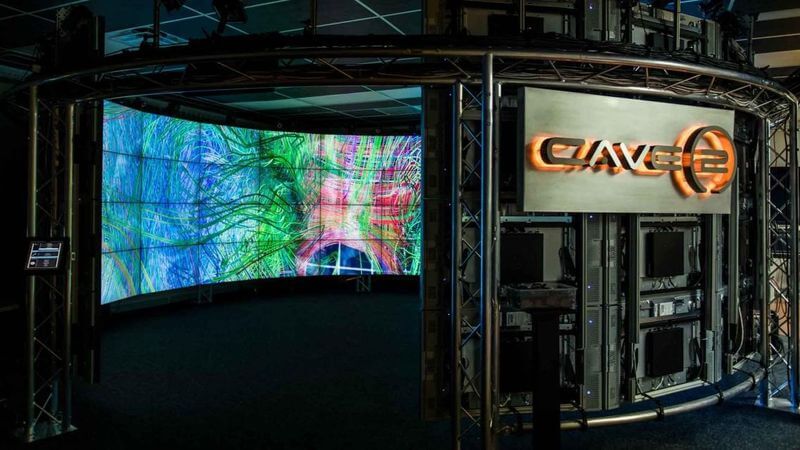
Image credit: EVL’s CAVE2
Every technology itself used in the virtual reality gaming system is an object of a huge amount of research. To combine them together many times more research will be needed. This requires time. A lot of time. Though, some experts think that a couple of decades are left till fully interactive VR experience.
Let’s take a break from ourselves away from the imaginary virtual reality gaming future, take a reality check and give a glance at the statistics.
VR gaming industry
Global revenue and regional share in VR gaming market
According to Tractica, global virtual reality gaming sales were estimated at about 5.1 million dollars in 2016. As for regional markets, the leading place was taken by Europe: the revenue reached 1.9 million dollars. North America is at the second place with 1.5 million dollars. VR gaming sales worked out far less in Asia, 1 million dollars. The rest of the world was valued at 0.6 million dollars.
As reported by Grand View Research, China is expected to become a principal regional market by 2025. Also, the agency predicts Latin America Middle East and Africa to get a boost that will be presumably associated with escalating awareness and, as a result, increasing demand.
Revenue forecast in the virtual reality gaming market
According to the report of Grand View Research, Inc. under date of March 2017, VR in gaming market revenue will run at 45 billion dollars in 2025. At the same time, global VR gaming revenue amounted to 5.1 million dollars in 2016, suggesting that CAGR will be equal 27.5 %.
Such a growth can be explained by a few reasons.
- Technavio media and entertainment analysts think that the key producers of VR headsets such as Samsung, HTC, Sony, Oculus VR, and Google, will mobilize increasing awareness of VR gaming.
- For the time being VR gaming market is moves forward by VR headsets. Their development will also determine the progress of VR content.
- Key players in the market such as Microsoft, Nintendo and Sony are predicted to compete strongly that subsequently will reduce the prices.
- As expected by experts from Grand View Research, virtual reality game consoles that are compatible with virtual reality will be the most popular product of the aforementioned companies that ensure market growth.
- Mobile gaming is becoming more common. As claimed by Technavio researchers, globally 66% mobile users played games on their mobile devices at least once a month in 2016. Notably, 7% of them were virtual reality gamers. Ujjwal Doshi, a lead media and entertainment services research analyst at Technavio, said: “The VR technology on mobile devices is growing at the fastest rate. Its increasing popularity will drive the growth of the VR gaming market from 2017-2021.” Technavio analysts predict that during the forecast period the number of mobile device gamers will grow to 77%, VR gamers will amount to 15%.
Mobile VR gaming is predicted to show enormous growth
In 2016 VR video gaming sales revenue worldwide was divided up in the following way. PC contributed the largest part of sales, videlicet, 1.6 billion dollars. Consoles took a little bit less share of 1.2 billion dollars. Mobile VR gaming devices comprised 0.7 billion dollars sales. In as little as 4 years Statista analysts predict enormous growth of sales revenue. It is expected to take off in more than 9 times, from 3.5 to 32.8 billion dollars.
As for segregation by segment in 2020, the biggest change will concern mobile VR gaming. Its sales revenue will shoot up more than 11 times, from 0.7 to 8.2 billion dollars. PC segment will show an upward trend, but no so overwhelming as the mobile one. PC sales are forecasted to put up 5 times, from 1.6 billion dollars in 2016 to 8.5 billion in 2020. About the same growth rate will be shown by virtual reality game console segment, in 2020 it’s foretold to reach 6.1 billion dollars.
Virtual reality hardware and software
As stated in the report by Grand View Research, VR hardware CAGR will be 30% until 2025. Also, the revenue at VR hardware will be larger than the software one. Besides, there is another statistics by Juniper Research. According to it, virtual reality hardware revenue will reach 50 billion dollars in 4 years, in 2021. As the source reports, this index amounted to 5 billion dollars in 2016. So, CAGR was approximately 58.5%.
According to Grand View Research, after hardware consumer versions are ready they will be in a greater demand. In addition, hardware manufacturers will invest more in R&D to develop software compatible with their hardware products, such as new games.
So far, the software is developing at a slower pace. Nonetheless, at least 9 titles have gained more than $1 million in the Oculus store as on 17 October 2017 as Jason Rubin, Oculus’ Head of Content, claimed in the interview with Road to VR.
VR gamers will show an upward trend
Besides, Statista predicts that by the end of 2018 there will be about 16 million so-called “hardcore” gamers and more than 41 million “light” gamers that make active use of VR software and hardware.
ESA (Entertainment Software Association) released the report “Essential facts about the computer and video game industry” in 2017. The organization collected data from more than 4,000 American households. The research revealed that 63% of the most frequent gamers are familiar with VR, while 15% of them used it in 2016. Herewith, as it is reported by EEDAR (Electronic Entertainment Design and Research), more than 90% of console and PC VR owners are satisfied with their headset purchase. In addition, 1 in 3 of the most frequent gamers сlaimeid that they were “likely to buy virtual reality in the next year.”
More than 90% of console and PC VR owners are satisfied with their headset purchase.
EEDAR (Electronic Entertainment Design and Research)
Time in VR
According to the report of Opera Mediaworks, the average length of mobile application session was approximately 5 minutes in 2016. At the same time, in the article “Editorial: VR Is Exactly Where It Needs To Be” published on Uploadvr, the average length of Casino VR Poker was around half an hour. Moreover, one-third of sessions lasted for 1 hour or even longer. What will happen next when VR becomes more immersive and social? Maybe, gamers even can feel the time to flow more slowly, as they are more involved in the process while nothing external distracts them.
Virtual reality games genres
First-person shooters
The first-person shooter is a genre of computer games in which the gameplay is based on battles using a firearm or any other weapon with a first-person view in such a way that the player perceives what is happening through the eyes of the protagonist. In general, first-person shooters have similar features to other virtual reality shooting games, which represent one of the variants of action games.
As it’s claimed on “IoT For All” the shooter is the most popular in VR console gaming, and this particular genre will determine the further development of virtual reality field. Robo Recall, Drop Dead, SUPERHOT, Onward are among the most popular shooters.
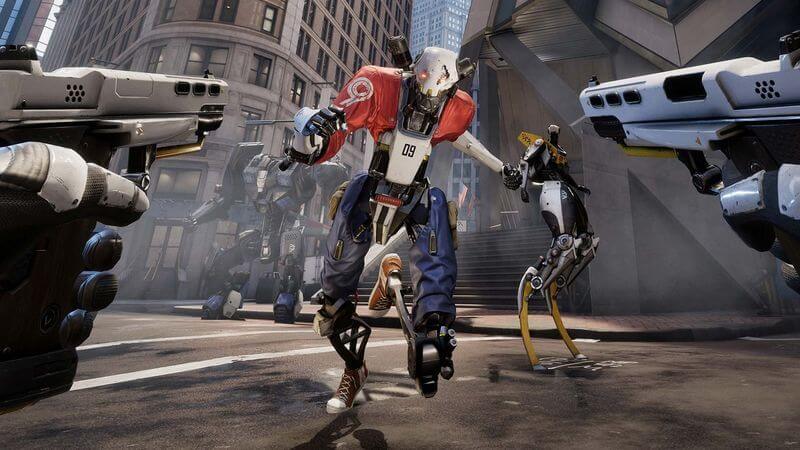
Image credit: Oculus
The challenge with most virtual reality shooting games is that the genre implies active movements while VR cannot provide freedom of movement for the time being. Although this is not typical for all of them. One of the exciting sub-genres of shooters is space shooter. The player just sits in his imaginary spacecraft and rescues planets and galaxies from aliens. One example of such games is EVE Valkyrie VR. You can knock down enemy fighters in an intergalactic air fight.

Image credit: EVE Valkyrie
Racing Games
Virtual reality racing games are, perhaps, one of the genres in which the player does not face the main limitation of virtual reality — freedom of movement restraint. Autosimulator is VR computer games in which a player drives a car seating in a chair.
One more reason for pleasure is the opportunity to experience an extreme situation being in safe keeping. Virtual reality racing games also answer the purposes of cars’ aficionados. Soon in virtual reality, it will be possible to fully experience the interior of the car, not only visually, but also through touches. The graphics quality in the world will grow and design will be made in exquisite detail.
Even now there is a whole truckload of virtual reality racing games in the market. Need for Speed No Limits VR, iRacing, Project CARS, DRIVECLUB VR, Redout: Enhanced Edition, Assetto Corsa, DiRT Rally are just some of them.

Image credit: DiRT Rally
Virtual reality horror games
There is one problem with horror genre exist. They sometimes do not fulfill their primary task to the full extent of its power — to frighten. Some hardcore gamers even can foresee what will happen next as the game progresses.
So, virtual reality can breathe new life into this genre. Imagine that you here exciting and intriguing music with 3D sound. Shadows glide smoothly as you are moving through the gloomy labyrinth. Behind you hear some kind of noise. What could it be? The sound of dripping water? You turn around. Suddenly something strongly pushes you in the back. Behold, you are already lying face near the ground. You turn and see the awful monster brooding above you. What will you do?
Virtual reality scary games an entirely different experience via immersive environment with 3D graphics of high quality, object-based audio and haptic feedback.
Here is the list of most popular virtual reality horror games:
- Syren
- Paranormal Activity VR
- Arizona Sunshine
- Here They Lie
- Resident Evil 7 VR
- A Chair In A Room
- Dreadhalls
- Lost in the Rift
- Until Dawn: Rush of Blood
- Emily Wants to Play

Image credit: Syren
Adventure games
Adventure is one of the main genres of computer games, which has the form of an interactive story with the main character controlled by the player. The most important elements of this genre game are narration and exploration of the world. The key role in the game process is solving puzzles and tasks that require the player to make mental efforts. Elements such as battles, economic planning, and tasks that require a player’s reaction speed and quick response are not the main characteristics of adventure games. They are minimized or completely absent.
Beautiful game graphics like in Firewatch charms and 3D environment only makes it better. Other prominent examples of adventure games are Loading Human and Gone Home. The Assembly is expected to release soon. The feature of the game will be switching between 2 characters.

Image credit: Firewatch
City building games
The city-building game is a genre in which the management of a city is simulated, primarily by its construction. Typically, it refers to economic strategies. In games of this kind, there is usually no definite goal, upon which the game ends. The goal is to process the city building itself.
Until recently, there are only a few games in this genre, such as Skylines, Cloud City VR, Tiny Town VR. Сonversations that Sims in VR will be amazing began long ago, but now, apparently, the genre begins its expansion in the market. Perhaps, the necessity of an abundance of graphics hinders the genre development.
City building in VR is likely to gain momentum soon, as the releases of many video games are announced.
Below is the list of games just released or expected to release soon. The Universim especially stands out among the others, since the world can be seen as a little planet and what prospects are expected to happen with it. It’s a pity, but the release date has not been announced yet.
- Frostpunk
- Aven Colony
- The Universim
- Atomic Society
- Rise of Industry
- Kingdoms and Castles
- Depraved
- Ostriv
- Surviving Mars
- Tropico 6
- Ancient cities
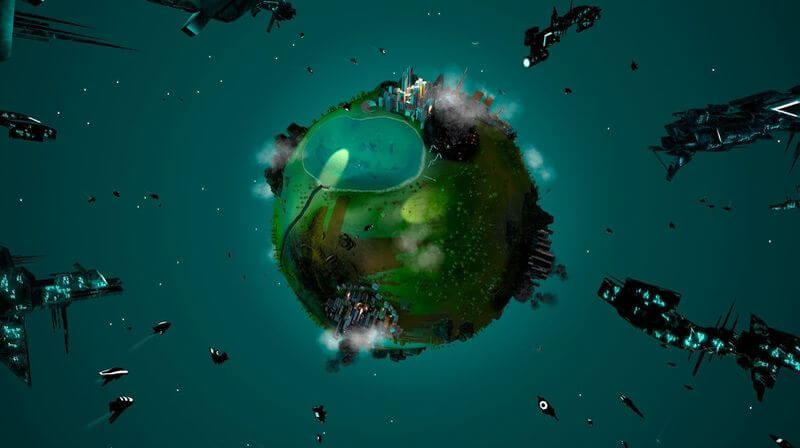
Image credit: The Universim
Casino and poker gaming
Online сasino gaming is a vast concept. Such projects can offer completely different types of gambling. Most often their assortment consists of all kinds of slot machines, roulette, poker and other card games.
The main feature of online casino is the availability of such resources. You can access the games using any device with an Internet connection, whether it’s a desktop computer, a laptop, a phone, a tablet or even TV.
Online poker is quite common on its own. Virtual reality can attract even more gamers to it through its growing immersion. It’s much more exciting to play in three-dimensional space than just looking at the monitor screen.
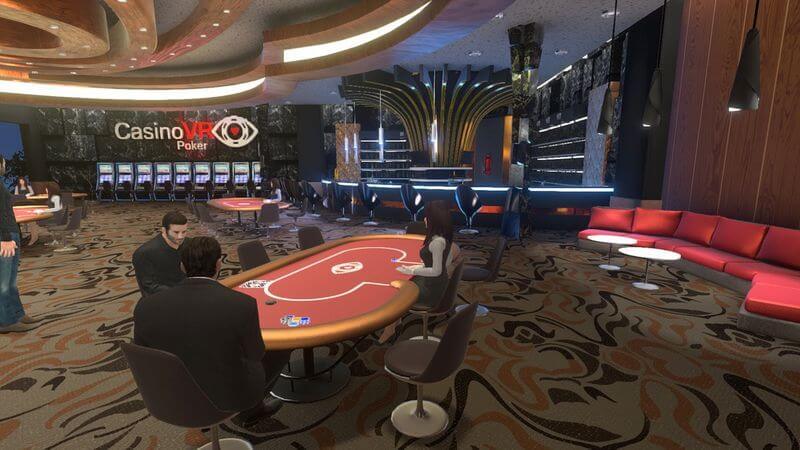
Image credit: Casino VR Poker
Surely, developers of сasino and poker games that will offer virtual experience at the confluence of the game and social interaction of players will be prosperous.
Exploration games
Virtual reality in gaming itself is quite a curious thing. Therefore, some game developers focused directly on the visual beauty of the virtual worlds. In the end, everyone loves beauty, and shooting is not appreciated by everybody.
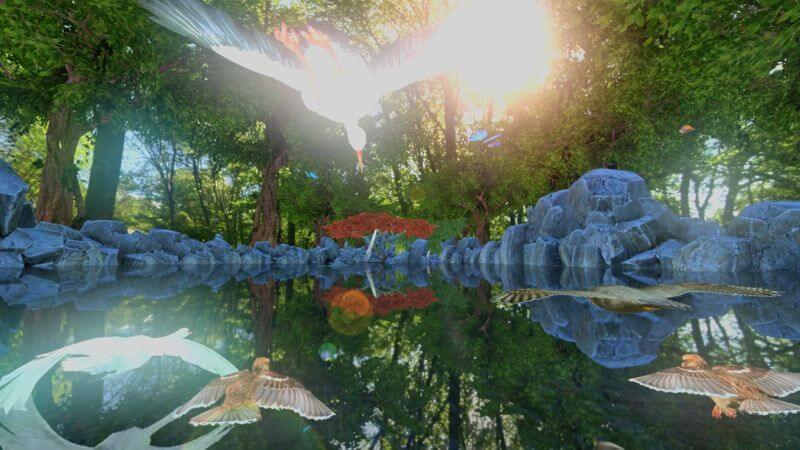
Image credit: Eden VR HD
Exploration games are one of the main genres in VR being held to imply discovering fantastic worlds. The gameplay of exploration genre is simple and suitable for players of any level.
It’s hard to argue that creating the unique atmosphere environment itself can become an example for other developers and cut through the clutter as a separate genre. It happened so, for example, with shooters. We can say that a new subgenre of space shooters has appeared.
“The world itself is the genre.”
XEODesign chief and game designer Nicole Lazzaro
The first examples of exploration games that come to mind are DYSTOA, P·O·L·L·E·N, Detached, ALICE VR, ESSENCE – VR Addon, Elena, Eden River HD.

Image credit: ALICE VR
Life simulation/social simulation
A single player video games were the most spread VR activity in 2016, according to EEDAR (Electronic Entertainment Design and Research). 74% of VR devices owners experienced a single player video games using PC/console, and 48% used mobile devices. While, only 38% and 22% of gamers played multiplayer video games with the help of PC/console and mobile devices, respectively.
The share of those who socialized with others via VR was 19% and 15% (PC/console and mobile devices, respectively). This is the most unclaimed activity in virtual reality yet.
Thus, the demand for social simulation in virtual reality is not so big as was expected. But it’s only for the time being. Many social networks based on virtual reality technology and VR dating simulations are in the development process and can not only update the approach to games but also have a significant impact on communication technologies.
Social VR games and virtual reality life simulations can actually become first-person VR experience games when you can act on your own behalf. The examples of life simulation/social simulation are Second Life, Sansar, VRChat.
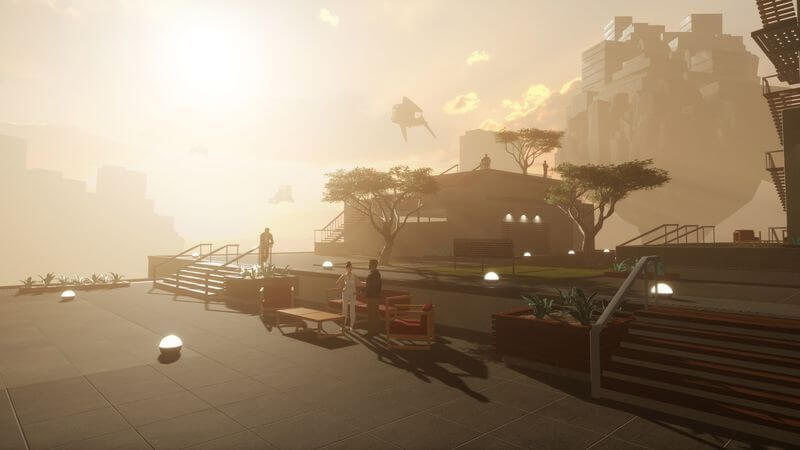
Image credit: Sansar
Future of virtual reality gaming
Indie games will equalize the scales
At the moment in virtual reality, the most popular games are those that we are used to in traditional video gaming. Shooters, adventure and action genres are the most in-demand.
Nevertheless, developers are increasingly working on unusual genres. Small fairy-tale virtual worlds where you are an only master can attract more than the action with intuitively predictable plot like in numerous movies. The games similar to Luna by Funomena can charm and immerse for hours not worse than traditional VR gaming.
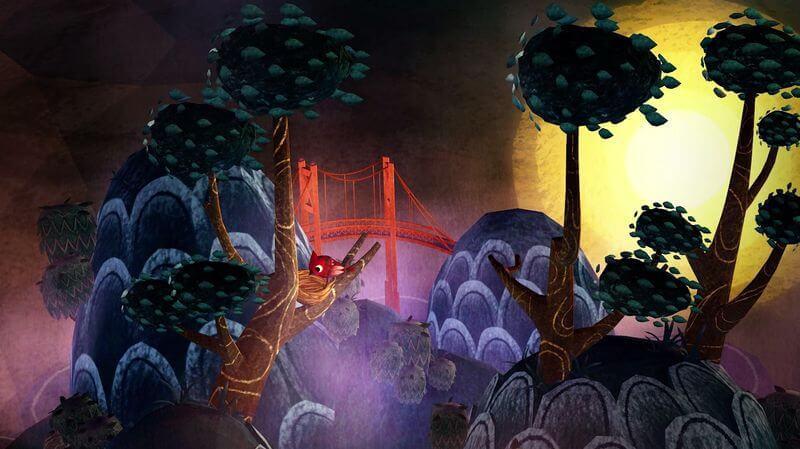
Image credit: Luna
Further immersion improvement
Hardcore gamers know way about latest innovations of virtual reality. High-quality picture and sound are already not enough for them.
A well-designed storyline with detailed elaboration is one of the main requirements for modern games. All the subjects and environments in virtual reality, you as a gamer want to touch, to feel odors, to experience taste, to perceive temperature. All that is left to do is to dream of it for the nonce. Nevertheless, everything is moving in this direction, especially b2b sector.
Of course, most developments are carried out in the sphere of haptic feedback.
The gamer to become protagonist
The protagonist is the hero, the main character in the game. In an ideal scenario, the developer should make so that each gamer feels himself a protagonist. Everyone wants to feel influential. This is one of the key reasons why people generally play games.
The previous trend of immersion intensification will also work for making the player’s virtual experience more realistic. 3D space, and, in the future, deeper immersion never better redound to it.
Of course, to feel like a protagonist is not only about technical means, but also about plot lines and other characters. Only all these factors together will affect what the player will feel in relation to the hero, or the latter will remain only not causing empathy figment of the writer’s imagination.
VR is a new medium for social interaction
Now gaming unites a huge number of people. And as a new technology virtual reality only contributes to this. Perhaps the number of gamers in the world will increase namely thanks to VR.
Multiplayer games are popular enough already. But in virtual reality gamers can interact on a whole nother level. Now we see that many games are tied to social networks. One may talk of that the trend will be the same in the virtual reality networks. It’s hard to define what will develop faster: virtual games with a component of communication or VR network. Meanwhile, gaming remains the main driving force of virtual reality technology.
Conclusion
Virtual reality as a new media is imposed more and more requirements. On the one hand, the equipment for virtual reality remains quite expensive. On the other hand, the consumers are ready for the second wave of virtual reality, complaining that the existing technologies are not sufficiently advanced.
The very technology of virtual reality, which assumes a high degree of immersion, is one of the most complex in the world. Accordingly, there are still many stages of its development, small and large. First of all, hardware will be developed. In addition to improving the helmets, we can expect the emergence further 3 senses: touch, senses of smell and taste.
It is gaming that is designed to move the realm of virtual reality forward. The number of gamers is expected to increase, including through the spread of virtual reality. Also, market revenue is predicted to rocket. In addition, mobile VR gaming segment will significantly soar.
Genre division of the VR gaming market remains approximately standard, as in traditional gaming. Particularly, shooters, races and action games are the most popular. Nevertheless, it’s most likely in the near future that content developers will try to saturate the market with quieter games that involve contemplating or creating something beautiful. So, you will be able can chillax longer in the gameplay and content providers will try to reach a wider audience.

